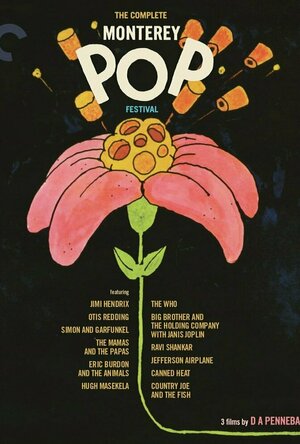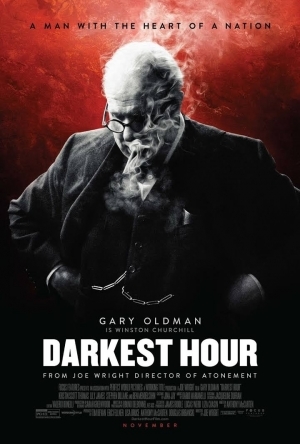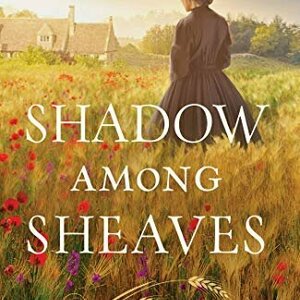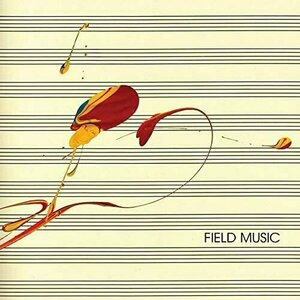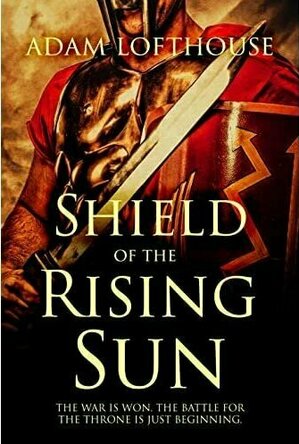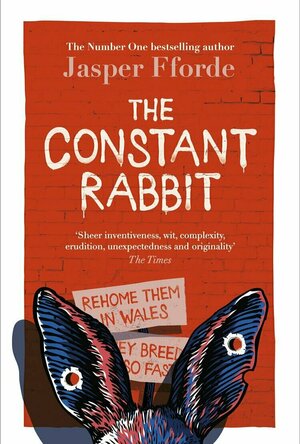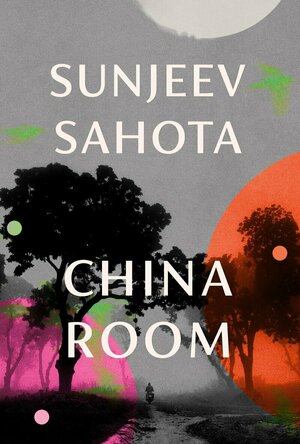Search
Search results
Allan Arkush recommended Monterey Pop (1968) in Movies (curated)
Awix (3310 KP) rated Darkest Hour (2017) in Movies
Feb 10, 2018 (Updated Feb 10, 2018)
Doesn't quite get to the Nub of the Issue
Yet another trip back to the Second World War, with plucky little Britain taking on the world single-handed, etc, etc. Essentially a kind of companion piece to Nolan's Dunkirk, with Gary Oldman's newly-installed Prime Minister having to oversee the retreat of the British army while contending with voices in his own government who want to enter peace negotiations with the Nazis.
Well, obviously British film-makers do this kind of heritage project quite well, and this is a polished movie even if it doesn't offer anything terribly original. The whole thing is carried along by Oldman's bravura performance - it must be said that Gary Oldman, thanks to the magic of prosthetic make-up it took three hours to apply, does look very much like Gary Oldman wearing three hours' worth of prosthetic make-up, but his performance is good enough to make you overlook the (lack of) resemblance.
You could possibly take exception to the film's rather rose-tinted depiction of Churchill, but for me the real flaw in the film is this - the central question posed by the story is just where Churchill's resolve to keep fighting came from, when everyone around him advised otherwise, and the situation seemed so abject. Was he such an idealistic champion of liberty, or foe of fascism? (Historical evidence suggests otherwise.) Or was he just a contrarian old bugger in love with his own legend? The movie doesn't find an convincing answer to this question. Still, otherwise well-made and engaging, and unlikely to outrage mild-mannered elderly relatives.
Well, obviously British film-makers do this kind of heritage project quite well, and this is a polished movie even if it doesn't offer anything terribly original. The whole thing is carried along by Oldman's bravura performance - it must be said that Gary Oldman, thanks to the magic of prosthetic make-up it took three hours to apply, does look very much like Gary Oldman wearing three hours' worth of prosthetic make-up, but his performance is good enough to make you overlook the (lack of) resemblance.
You could possibly take exception to the film's rather rose-tinted depiction of Churchill, but for me the real flaw in the film is this - the central question posed by the story is just where Churchill's resolve to keep fighting came from, when everyone around him advised otherwise, and the situation seemed so abject. Was he such an idealistic champion of liberty, or foe of fascism? (Historical evidence suggests otherwise.) Or was he just a contrarian old bugger in love with his own legend? The movie doesn't find an convincing answer to this question. Still, otherwise well-made and engaging, and unlikely to outrage mild-mannered elderly relatives.
Billie Wichkan (118 KP) rated Conviction in Books
May 22, 2019
From 'the woman who may be Britains finest living crime novelist' (Daily Telegraph), Conviction stars a strong female protagonist who is obsessed by true-crime podcasts and decides, one day, to investigate one of the unsolved crimes herself.
Its just a normal morning for Anna McDonald. Gym kits, packed lunches, getting everyone up and ready. Until she opens the front door to her best friend, Estelle. Anna turns to see her own husband at the top of the stairs, suitcase in hand. Theyre leaving together and theyre taking Annas two daughters with them.
Left alone in the big, dark house, Anna cant think, she cant take it in. With her safe, predictable world shattered, she distracts herself with a story: a true-crime podcast. Theres a sunken yacht in the Mediterranean, multiple murders and a hint of power and corruption. Then Anna realises she knew one of the victims in another life. She is convinced she knows what happened. Her past, so carefully hidden until now, will no longer stay silent.
This is a murder she cant ignore, and she throws herself into investigating the case. But little does she know, her past and present lives are about to collide, sending everything she has worked so hard to achieve into freefall.
This is my first read by Denise Mina and it won't be my last.
What a brilliant read this was. Wow what an opening this had with it.
This definitely psychological thriller and very chilling.
Loved the writing style and the plot of this story.
Really enjoyed the characters and couldn't stop reading til finished as I just had to know.
Recommend reading!
My thanks to Random House U.K. Vintage Publishing for an eARC via NetGalley and this is my honest voluntary review.
Its just a normal morning for Anna McDonald. Gym kits, packed lunches, getting everyone up and ready. Until she opens the front door to her best friend, Estelle. Anna turns to see her own husband at the top of the stairs, suitcase in hand. Theyre leaving together and theyre taking Annas two daughters with them.
Left alone in the big, dark house, Anna cant think, she cant take it in. With her safe, predictable world shattered, she distracts herself with a story: a true-crime podcast. Theres a sunken yacht in the Mediterranean, multiple murders and a hint of power and corruption. Then Anna realises she knew one of the victims in another life. She is convinced she knows what happened. Her past, so carefully hidden until now, will no longer stay silent.
This is a murder she cant ignore, and she throws herself into investigating the case. But little does she know, her past and present lives are about to collide, sending everything she has worked so hard to achieve into freefall.
This is my first read by Denise Mina and it won't be my last.
What a brilliant read this was. Wow what an opening this had with it.
This definitely psychological thriller and very chilling.
Loved the writing style and the plot of this story.
Really enjoyed the characters and couldn't stop reading til finished as I just had to know.
Recommend reading!
My thanks to Random House U.K. Vintage Publishing for an eARC via NetGalley and this is my honest voluntary review.
<i>This ARC was provided by the publisher via NetGalley in exchange for an honest review</i>
<i>Captive</i> is the debut young adult thriller by British author A. J. Grainger. Set in contemporary Britain, sixteen-year-old Robyn, the daughter of the Prime Minister, is kidnapped and held hostage by three animal rights activists. Until the government agrees to release the person accused of the attempted assassination of the PM four month previously, they refuse to free Robyn from captivity. It soon becomes clear that a lot of lies and cover-ups have been occurring and it is difficult to know whom to trust.
The novel gets off to a great start with a lot of action as Robyn and her family is ambushed on their way to visit grandparents. The first half of the book is really exciting as the reader slowly gets to grips with what is going on.
Grainger writes really well with great use of descriptive words and phrases. To keep the reader engaged and to lengthen the story she includes other interesting details that are educational in a way – for example, knowledge about birds.
Unfortunately the second half of the book is not as exciting as the first. A relationship starts developing between Robyn and one of the captors, which is rather unoriginal and predictable.
One thing that I particularly liked about this novel was Robyn’s character. Naturally people may expect daughters of prime ministers to be snobbish and spoilt but Robyn was the complete opposite. She did not care about where her clothes came from or whether or not she went to parties. Robyn was the representation of the average teenage girl preparing for her GCSEs.
Despite the clichéd captor/hostage situation <i>Captive</i> is a very enjoyable novel with a few exhilarating twists in the plot.
<i>Captive</i> is the debut young adult thriller by British author A. J. Grainger. Set in contemporary Britain, sixteen-year-old Robyn, the daughter of the Prime Minister, is kidnapped and held hostage by three animal rights activists. Until the government agrees to release the person accused of the attempted assassination of the PM four month previously, they refuse to free Robyn from captivity. It soon becomes clear that a lot of lies and cover-ups have been occurring and it is difficult to know whom to trust.
The novel gets off to a great start with a lot of action as Robyn and her family is ambushed on their way to visit grandparents. The first half of the book is really exciting as the reader slowly gets to grips with what is going on.
Grainger writes really well with great use of descriptive words and phrases. To keep the reader engaged and to lengthen the story she includes other interesting details that are educational in a way – for example, knowledge about birds.
Unfortunately the second half of the book is not as exciting as the first. A relationship starts developing between Robyn and one of the captors, which is rather unoriginal and predictable.
One thing that I particularly liked about this novel was Robyn’s character. Naturally people may expect daughters of prime ministers to be snobbish and spoilt but Robyn was the complete opposite. She did not care about where her clothes came from or whether or not she went to parties. Robyn was the representation of the average teenage girl preparing for her GCSEs.
Despite the clichéd captor/hostage situation <i>Captive</i> is a very enjoyable novel with a few exhilarating twists in the plot.
MaryAnn (14 KP) rated Shadow Among Sheaves in Books
Nov 4, 2019
A Timeless, Beautiful Allegory of the Biblical Love Story of Ruth and Boaz The Great Rebellion of 1857 was a remarkably bloody business. At a time when Britains imperial influence in India was sparking brutal clashes on both sides, no one could have expected Rena, an Indian woman, to marry a British officernor do they understand her decision to follow her mother-in-law to England after her husbands tragic death. Once the two widows are in Abbotsville, the stern yet compassionate Lord Barric attempts to help them despite his better judgment. Soon he is torn between the demands of reputation and his increasing desire to capture Renas heart for his own.
My Thoughts: In this novel, we learn about Britain's history of "The Great Rebellion" and how it affected the lives of both the British and of those whose homeland is India. The author brings the reader back to the customs of that era and of each nationality. It gives the reader focus on how the characters may feel and react in the story.
I really love the book of Ruth in the Bible and enjoyed how this novel mirrored that book. The author has done an incredible job of bringing this novel into perspective with the Biblical story of Ruth. The author has done an incredible amount of research to bring us a novel that shows the reader what it may feel like to be cast out, to be in a foreign land with different customs and to successfully parallel it to a biblical book in the Bible.
This is a book about redemption, love, and trusting in God. I truly enjoyed this novel and highly recommend it.
My Thoughts: In this novel, we learn about Britain's history of "The Great Rebellion" and how it affected the lives of both the British and of those whose homeland is India. The author brings the reader back to the customs of that era and of each nationality. It gives the reader focus on how the characters may feel and react in the story.
I really love the book of Ruth in the Bible and enjoyed how this novel mirrored that book. The author has done an incredible job of bringing this novel into perspective with the Biblical story of Ruth. The author has done an incredible amount of research to bring us a novel that shows the reader what it may feel like to be cast out, to be in a foreign land with different customs and to successfully parallel it to a biblical book in the Bible.
This is a book about redemption, love, and trusting in God. I truly enjoyed this novel and highly recommend it.
Alex Kapranos recommended track To the East by Electrelane in No Shouts No Calls by Electrelane in Music (curated)
Marc Riley recommended Measure by Field Music in Music (curated)
ClareR (5879 KP) rated Shield of the Rising Sun (Path of Nemesis #3) in Books
Sep 8, 2020
This is the third book in a series of historical fiction novels set in the Roman era. Even though I haven’t read the first two books, I had no problem at all in understanding what was going on in the Shield of the Rising Sun. Although that now doesn’t stop me from wanting to read the first two books!
The story is told by three characters: Albinus, his son Faustus, and Faustus’ uncle, Calvus. The battle scenes, mainly from Albinus’ point of view, were gory (I like this - I know, probably a bit odd!) and the politics with all the infighting and back-stabbing was fascinating. How did anyone ever feel safe at this time? I’ll answer that: if they were clever, they NEVER felt safe!
This story shows the true reach of the Roman Empire - there are scenes in Britain, Germany and Egypt, as well as in Rome. It frankly amazed me how quickly Roman soldiers seemed to be able to travel - and mostly (if not solely) on foot!
The main characters were all three very likeable men, who had me rooting for them throughout - even though it was pretty obvious what would happen to one of them from the start )I’m giving nothing away here!).
I enjoy reading a lot of historical fiction, and it’s not often that I read books set in the Roman period. I don’t know why, there’s no reason I can think of, and this makes me realise that I really should read more! If, like me, you’re a fan of historical fiction, then you’ll enjoy the rich descriptions and history packed story within the pages of this book.
Many thanks to The Pigeonhole for serialising this book, and to Adam Lofthouse for joining in and commenting in the margins!
The story is told by three characters: Albinus, his son Faustus, and Faustus’ uncle, Calvus. The battle scenes, mainly from Albinus’ point of view, were gory (I like this - I know, probably a bit odd!) and the politics with all the infighting and back-stabbing was fascinating. How did anyone ever feel safe at this time? I’ll answer that: if they were clever, they NEVER felt safe!
This story shows the true reach of the Roman Empire - there are scenes in Britain, Germany and Egypt, as well as in Rome. It frankly amazed me how quickly Roman soldiers seemed to be able to travel - and mostly (if not solely) on foot!
The main characters were all three very likeable men, who had me rooting for them throughout - even though it was pretty obvious what would happen to one of them from the start )I’m giving nothing away here!).
I enjoy reading a lot of historical fiction, and it’s not often that I read books set in the Roman period. I don’t know why, there’s no reason I can think of, and this makes me realise that I really should read more! If, like me, you’re a fan of historical fiction, then you’ll enjoy the rich descriptions and history packed story within the pages of this book.
Many thanks to The Pigeonhole for serialising this book, and to Adam Lofthouse for joining in and commenting in the margins!
Ross (3284 KP) rated The Constant Rabbit in Books
Aug 20, 2020
Great absurd book
Fforde's kay strength as an author is coming up with a premise and turning a surface-level idea into a wonderfully worked piece of fiction. My past reading of his have been more absurd crime-style investigatory books, where a character in an unusual world investigate a crime in that world. The world can unfold itself gradually over time and the story is fairly well structured.
In The Constant Rabbit, Fforde has taken the topic of racism and put it in a different setting. Due to an unexplained event, a number of animals were anthropomorphised, including a few rabbits, foxes, bears and elephants. True to their nature, that small population of rabbits has exploded and they now represent a large proportion of the population. Britain being what it is, there is a lot of ill-feeling toward these rabbits and this has made it's way into politics and societal changes. The government themselves are the UK Anti Rabbit Party, and there are a great number of restrictions on the rabbits' freedom of movement.
The book serves as a great analogy for historic racism and xenophobia that still remains in the UK and the western world as a whole.
The story itself only reveals itself gradually, it takes a long time to be set up and generally just unfolds. There is no real underlying plot from the off, it is the unfolding of a scenario.
To that end, I felt this book was a little more about the idea, and the effort put in to fleshing that out, and the story itself has suffered slightly. There are long sections of exposition throughout the book, and at times it does get a little boring.
Far from Fforde at his best, it is still a great funny book and a wonderful thought experiment and demonstration of the ludicrousness of xenophobia.
In The Constant Rabbit, Fforde has taken the topic of racism and put it in a different setting. Due to an unexplained event, a number of animals were anthropomorphised, including a few rabbits, foxes, bears and elephants. True to their nature, that small population of rabbits has exploded and they now represent a large proportion of the population. Britain being what it is, there is a lot of ill-feeling toward these rabbits and this has made it's way into politics and societal changes. The government themselves are the UK Anti Rabbit Party, and there are a great number of restrictions on the rabbits' freedom of movement.
The book serves as a great analogy for historic racism and xenophobia that still remains in the UK and the western world as a whole.
The story itself only reveals itself gradually, it takes a long time to be set up and generally just unfolds. There is no real underlying plot from the off, it is the unfolding of a scenario.
To that end, I felt this book was a little more about the idea, and the effort put in to fleshing that out, and the story itself has suffered slightly. There are long sections of exposition throughout the book, and at times it does get a little boring.
Far from Fforde at his best, it is still a great funny book and a wonderful thought experiment and demonstration of the ludicrousness of xenophobia.
ClareR (5879 KP) rated China Room in Books
Aug 13, 2021
China Room was a beautifully written, emotional novel set in rural Punjab in 1929 and the 1990’s. The unnamed male protagonist in the 90’s has travelled to stay with family mainly to kick a drug habit before he starts at university back in the UK. His addiction could well have been caused by the racist taunts and violence he has experienced at home in Britain - these things are addressed in the book.
He ends up staying on the abandoned family farm: a ramshackle building that needs a lot of work. One room is locked: the China Room. This is where his grandmother, Mehar, would have lived away from the prying eyes of men, working with the wives of the other two brothers to her husband. None of the women know who their husband is - they never see them in daylight. They cook and clean for them, and then have sex with them when their mother-in-law, Mai, allows. Their main function is to bear sons.
It’s a hard way of life, but the women accept their roles. As a 21st century women, living in the West, I found this very difficult to read. It’s an oppressive, claustrophobic life - even down to the veils that they had to wear when out in public which gave the impression of suffocation. I don’t know whether any of the girls actually looked another human in the face, other than each other and their mother-in-law.
But I found this timeline fascinating, and it was a huge contrast to that of Mehar’s grandson. It’s a compelling read - I read it in one sitting, and was a bit sad when I turned the last page, to leave the world of Mehar in particular.
Many thanks to Harvill Secker and Viking for my copy of this book to read and review.
He ends up staying on the abandoned family farm: a ramshackle building that needs a lot of work. One room is locked: the China Room. This is where his grandmother, Mehar, would have lived away from the prying eyes of men, working with the wives of the other two brothers to her husband. None of the women know who their husband is - they never see them in daylight. They cook and clean for them, and then have sex with them when their mother-in-law, Mai, allows. Their main function is to bear sons.
It’s a hard way of life, but the women accept their roles. As a 21st century women, living in the West, I found this very difficult to read. It’s an oppressive, claustrophobic life - even down to the veils that they had to wear when out in public which gave the impression of suffocation. I don’t know whether any of the girls actually looked another human in the face, other than each other and their mother-in-law.
But I found this timeline fascinating, and it was a huge contrast to that of Mehar’s grandson. It’s a compelling read - I read it in one sitting, and was a bit sad when I turned the last page, to leave the world of Mehar in particular.
Many thanks to Harvill Secker and Viking for my copy of this book to read and review.
